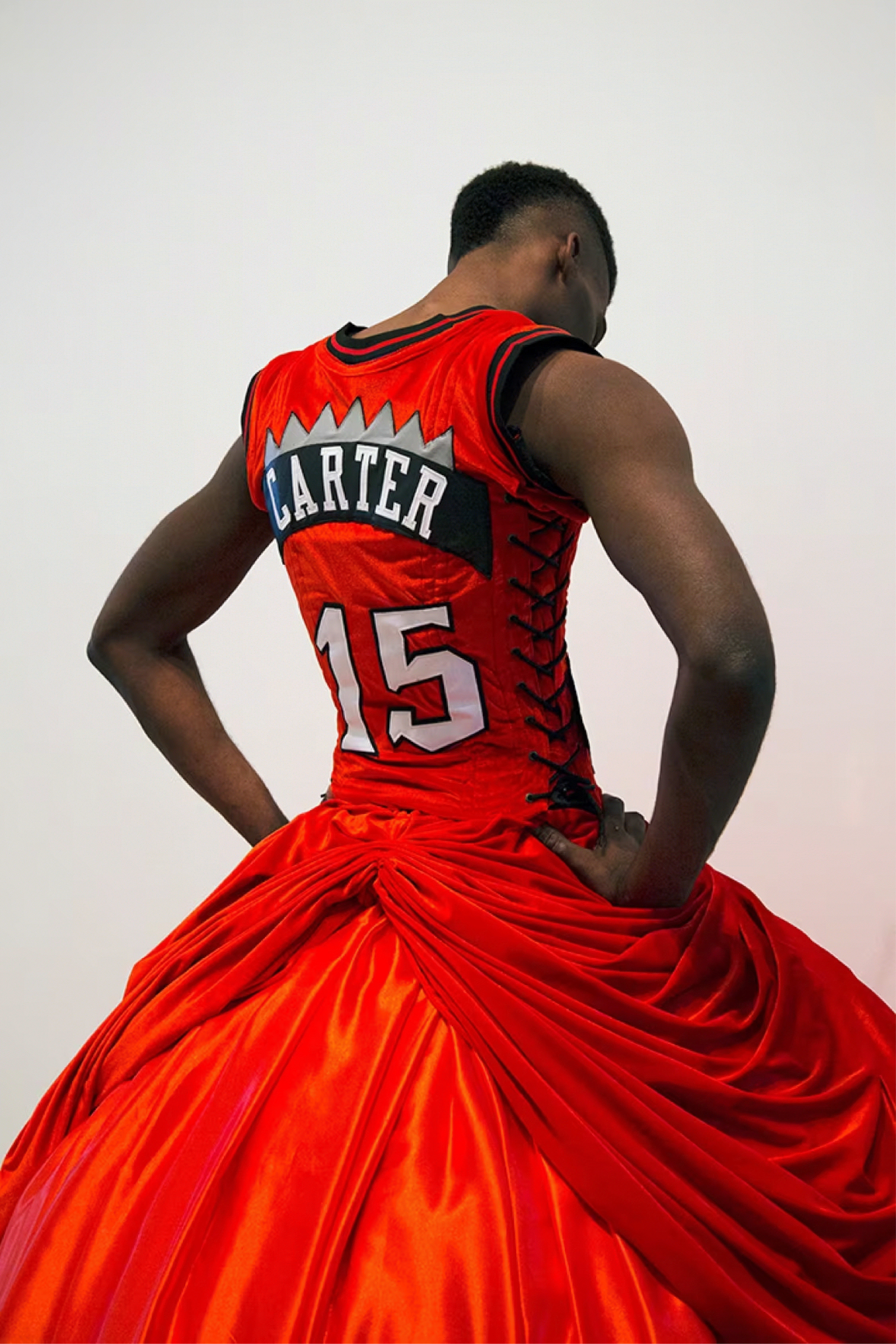
Esmaa Mohamoud's art does not ask for space — it demands it. And it was this demand that stopped me in my tracks a few weeks ago as I gazed in wonder at her formidable sculptures and photographs that are currently on display at the Art Gallery of Ontario.
Mohamoud's work is part of the gallery's current exhibition, Every. Now. Then: Reframing Nationhood, which features work from emerging and established artists across Canada. It is an impressive collection of sculptures, paintings, photography, soundscapes, dioramas and textile works that attempt to grapple with the questions of Canada's past, present and future possibilities. On to December 10, it opened on the eve of the contentious 150-year celebrations.
I returned to the AGO last week to speak with Mohamoud about her work. It was after hours, and with the museum closed to the public, there was a surreal tranquility to the gallery as staff scuttled about performing behind-the-scenes magic tricks. Mohamoud and I settled into chairs on the fourth floor, which has been completely taken over by Every. Now. Then.
Mohamoud says some of her friends have criticized her for being a part of the show because it's a Canada 150 event. "I'm not supporting the celebration of Canada and all the shitty things it's done," she explains to me. "I'm celebrating us being acknowledged in these spaces because if we don't take up space, a white body will. If I don't put on for my people, they'll replace us."
Indeed, the entire exhibit isn't so much a celebration, but a way of questioning how Canada has been and continues to be built. Mohamoud's work uses the accessible theme of athleticism to spark a dialogue about race and gender in that conversation. Developed as part of her master's degree at OCAD University, her sculpture Heavy, Heavy (Hoop Dreams) is a collection of 60 deflated concrete basketballs imposingly arranged on top of black Plexiglas.
The sculptures are flanked by her latest work, an installation she co-created with artist Qendrim Hoti entitled One of the Boys. Two ball gowns are presented, one purple and one red. Both are crafted from Vince Carter Raptors jerseys. Above them, hanging from the ceiling, are NBA-style banners of two triumphant portraits. In each photo, the gowns are worn by individuals whose backs are to the camera. It's what Mohamoud calls the "power stance." Their reflections shine in the black Plexiglas below.
When we start our conversation, Mohamoud emphatically states that she wants the art, and not the artist, to take centre stage. However, I quickly realize that her creations are inextricably connected to intimate memories and personal reflections. The only girl in a family of boys, Mohamoud grew up as a die-hard fan of basketball who often had to defend her love of the game. She found her heroes in NBA players like Vince Carter — whose jersey she wore religiously — and in her older brother. His journey partially inspired Heavy, Heavy (Hoop Dreams).
In total, that sculpture weighs approximately 18,000 pounds. Mohamoud shaped and contoured each 30-pound ball of concrete. For the artist, this physical process constantly reaffirmed the heaviness of the unrealized dreams each form symbolizes. "Often blackness, in terms of athleticism, particularly in Canada, gets erased. People don't really think of black Canadian basketball players. But my brother grew up thinking he was gonna be an NBA player."
Only 30 men enter the NBA each year, leaving countless individuals with what Mohamoud calls "deflated hoop dreams." In her artist statement she writes, "I often think about all the black men across North America who grow up thinking they're going to get into the NBA. They rely on the fact that they're going to become wealthy basketball players, and when they don't make it into the NBA, they have nothing to fall back on. This felt so heavy to me. The concrete basketballs are physically heavy but also fragile — the nature of concrete is to crack, so eventually these will break apart."

Esmaa Mohamoud in collaboration with Qendrim Hoti. One of the Boys, 2017. (Courtesy of the artist)
Alongside these deflated dreams stand the ball gowns, large and flamboyant embroidered dresses with cascading layers of fabric emblazoned with the Toronto Raptors logo. They remind me of Disney princesses and my neighbourhood basketball courts all at once. Wearable sculptures, the gowns are laced on the sides, crafted to be adjustable for various body types. The installation One of the Boys is a physical articulation of a childhood vision for Mohamoud, delicately balancing the external pressures to be feminine with her childhood desire to wear her Vince Carter jerseys every day. "I was just a little girl who wanted to be Vince Carter and didn't know how to be," Mohamoud tells me as she readjusts the mounted dresses.
The banners were the final addition to the installation. "The issue that I had was that for the majority of the exhibition, the dresses would actually be vacant and without a black body," Mohamoud explains. "I think that it's really important to continue to re-insert these images of blackness in these spaces because we often get erased. If these are just here, no one's going to know that black bodies navigated these spaces. I'm going to remind people."
By invoking symbols of hyper-femininity (the ball gown) and hyper-masculinity (the basketball jersey), Mohamoud and Hoti craft a space of gender fluidity that resists clear demarcation. With the models both adorned in gowns, displaying their backs to the cameras, there is a statement of defiance. These bodies refuse easy categorization.
In the catalogue for Every. Now. Then., an essay by one of the curators, Anique Jordan, poses the following questions: "What does it take for a black person to survive in this country? And why, despite our survival, does the continued absence of our bodies in Canadian history, archives and art galleries persist? What does an artist create from these conditions?" Absence, survival and invisibility have been constant preoccupations for Mohamoud. "I feel like Solange all the time!" she laughs, shaking her head. "I am tired and weary of the ways of the world, man."
Mohamoud grew up in London, Ont., where — as she puts it — she was "one of the very few black people to exist on that land." That experience has informed her perception of what it means to show art in historic places like the AGO. "I find that in large institutions black bodies are not represented," she says quietly, looking around the gallery. "When I was creating this project, I didn't create it [with the] mind that I wanted to take up space. But I've always been hyper-aware of how our bodies have become minimized and compressed and to some extent disposable. It's like we come in, we get tokenized, we get thrown out right after. I've always created works that I felt were larger than my body. That have made me be aware of my body through the actual physicality of the object. So taking up space...is just what I do!"
At the AGO's First Thursday two weeks ago, the gowns were taken off off their stands and worn by the models in the photographs. They travelled through the gallery, striking statuesque poses in rooms and stairwells. Although this art is only in the gallery for a short while, Mohamoud is determined to disrupt "colonial" spaces with regal costumes and black bodies.

